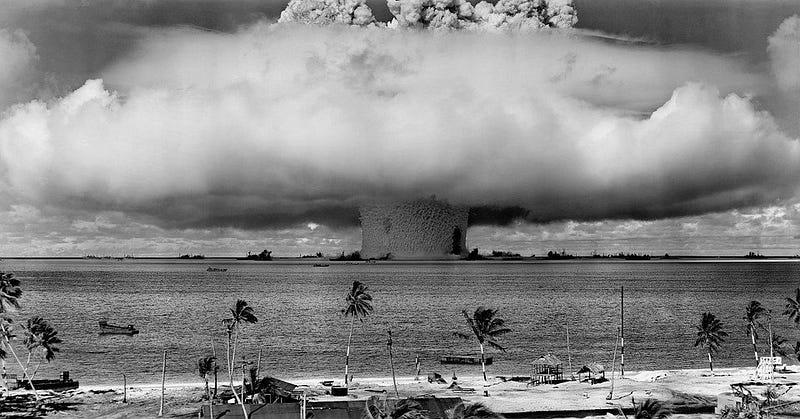The atom and its entropy
By Sunanda Kannapadi, MS Biotechnology, 2021

Millions of years ago, our universe started off with a bang that shook us to our core, and nature decided to package its impact into a minuscule particle — the atom. Scientific endeavors in the field have sufficiently proven that an atom is a sphere of energy with a cloud of electrons surrounding a nucleus made of protons and neutrons. The intense study of this particle has not only increased our understanding of matter itself, but has allowed us to produce impressive amounts of energy, enough to both sustain and sabotage our planet.
Every atom plays a very important role in the production of unimaginable amounts of nuclear energy by simply knocking out an electron or breaking the nucleus apart. Nuclear fusion that happens naturally in the Sun and fission that has been created in nuclear reactors are all representative of the fact that this single, tiny entity is capable of releasing energy on such a macroscopic scale. It is this surplus in energy each time an atom is modified that makes it so unpredictable and causes it to have an increased tendency towards chaos. So the atom, which is essentially a spinning, shape-shifting sphere, tends increasingly towards breaking the natural order it is placed in. This innate tendency makes human manipulation of atomic structures a dangerous game that needs to be played carefully.
This innate tendency makes human manipulation of atomic structures a dangerous game that needs to be played carefully.
Humans have a tendency to meddle with the natural order of things. This has led to nuclear technology being used in every single field, ranging from energy production to protein structure elucidation. Each field uses one specific aspect of the atom to get the required result; while one breaks the atom apart, the other uses it as a magnet capable of exhibiting resonance. Both processes are incredibly useful, but can turn out to be catastrophic if even the smallest factor is out of place.
The deadliest man-made disaster, the Chernobyl nuclear disaster, is a prime example of the dangers that occur when things do go wrong. The energy and entropy that was released because of the nuclear reactor exploding were second to none. The cause of this blast was attributed to faulty control rod design, which led to the reactor being unable to control the rapid rates of atomic fission that occurred in a fraction of a second. This shows that atomic structure is not something to be played around with or taken for granted. The repercussions of Chernobyl echoed through the lives of millions, affecting them for generations to come. There is still a pressing need to make sure that systems that are heavily reliant on atomic structure for basic functioning are properly designed and regularly maintained.
In conclusion, like all systems in the universe, the atom tends towards disorder and an ever-increasing entropy due to its constant transition between stable and unstable natural structure. However, there is a void in the understanding of atomic structure that can be filled only by further research into specific quantum mechanisms that the atom follows. We are finding new ways to define the atom and its immense power but sometimes forget to return to the root of what the atom is — an extremely powerful spinning magnet that needs to be carefully harnessed because of its potential to cause a catastrophe. Keeping this thought in mind, our future atomic systems should align with both sides of the atomic spectrum in equilibrium.